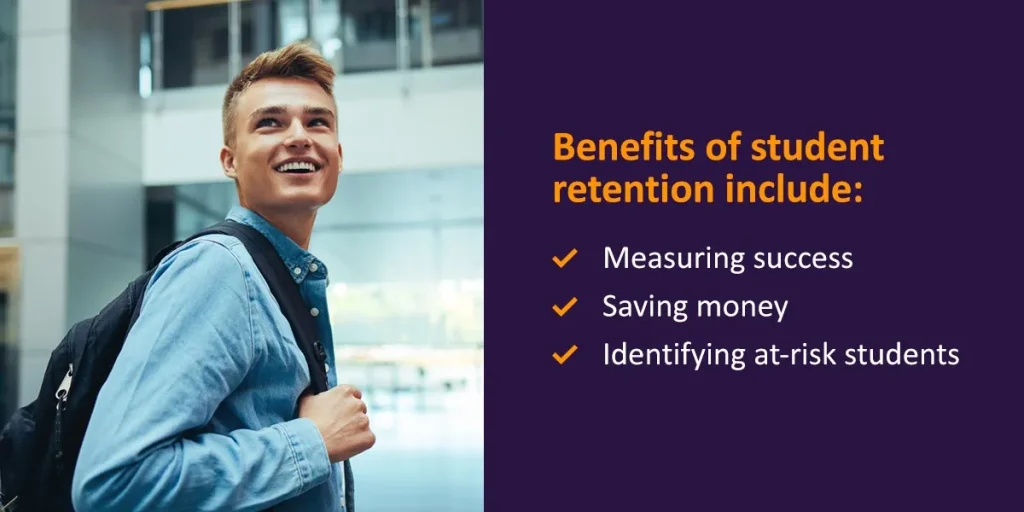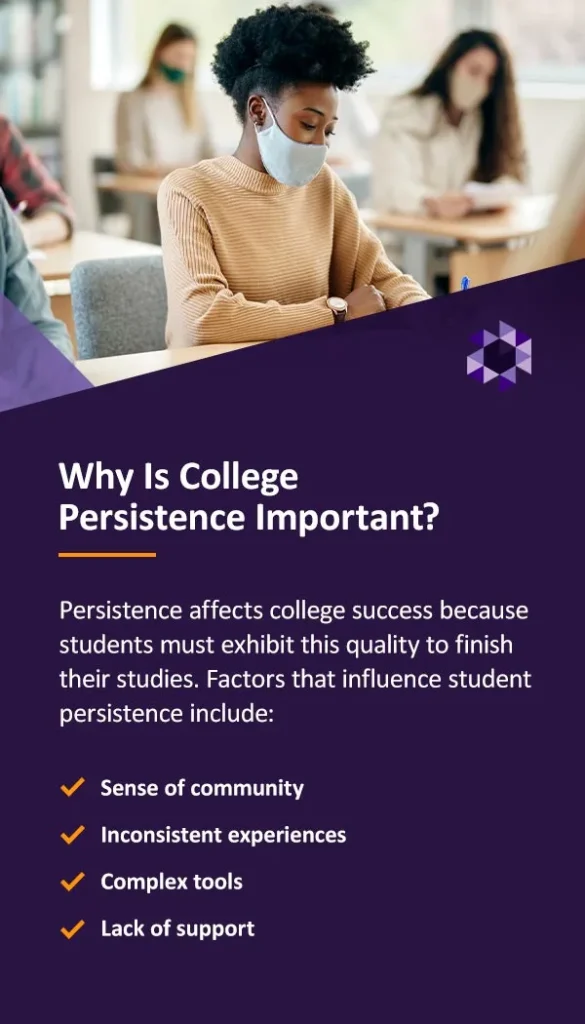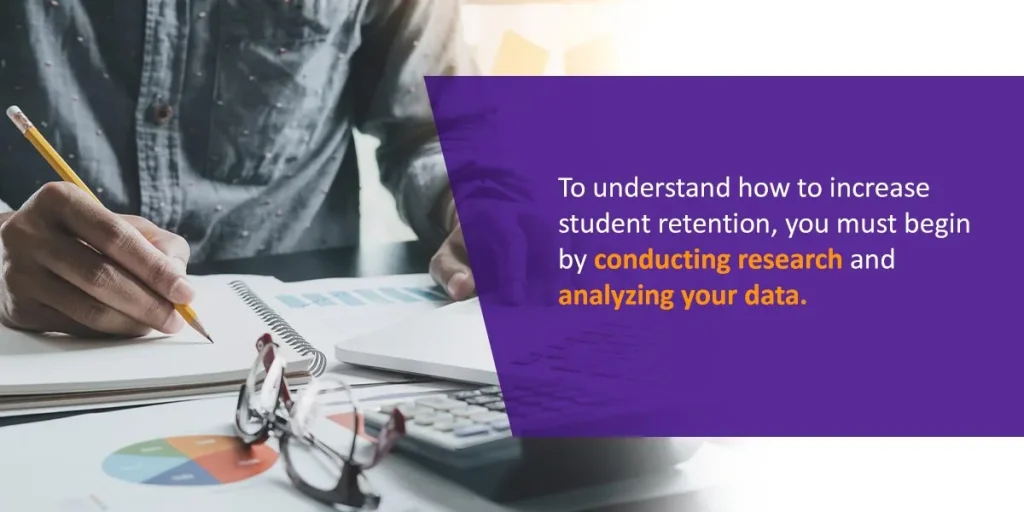



Higher education institutions have a mission to reshape the future by giving students a quality education and a love of lifetime learning. To continue working towards this hefty goal, institutions need to address the decreasing retention rates that identify how many students enroll in school without finishing.
Many schools have taken the initiative to create a more fulfilling educational experience for students. Some institutions have leveraged new technology that promotes efficiency and productivity, while others have lowered tuition costs. Additionally, some campuses offer more online classes or encourage hybrid modes of education. Despite the efforts to become more accommodating, many institutions face a decrease in student retention and enrollment. Students are leaving their education behind or not enrolling from the start and seeking alternative experiences that provide more satisfaction, a sense of community, and financial security.
Combatting decreasing enrollment and retention is key to ensuring higher education institutions fulfill their promise of shaping students into leaders, innovators, and productive citizens. But, figuring out exactly how to do so is a challenging task. Understanding the needs of your students is necessary to give them an enriching environment and ensure your institution profits from the hard work you’ve committed to.
Higher education institutions measure student retention by comparing student return rates from one year to the next. This measurement is a metric of success for students and educational institutions. When colleges and universities lose students before graduation, these institutions must dedicate resources to recruiting new students to compensate for the loss of tuition revenue.
Students don’t return to school for many reasons, but retention statistics don’t reflect their reasons for leaving. To improve student retention, you have to focus your efforts on determining why your students drop out or transfer. You should obtain student and faculty feedback and identify areas where your campus community identifies problem spots that you can work to improve.

Student retention is important because it gives you a measurable metric to refer to so that you can better understand why students leave before graduating or without finishing their programs. Low retention rates indicate students are struggling. Institutions lose significant money yearly to non-returning students, and those numbers reflect each one. Understanding the importance of student retention in higher education is the start to developing strategies that keep students engaged at your institution.
Benefits of student retention include:
Guiding your students to success will encourage them to finish their studies and find a career in their desired field while keeping a steady revenue for your institution. When students leave school, they miss a quality education that links them to their interests, and institutions miss out on tuition and additional student costs.
When you enroll a student in your curriculum, you devote resources and aid to students who are going to pay for the education for multiple years. In many cases, they’ve taken a spot in your institution that another student could have filled. When students leave, you don’t see a return on your investment, and students leave school without a degree or other credentials to show for their work and knowledge. Instead of two or more years of tuition, meal plans, and other resources, your institution only receives a portion of those costs, many times as little as one year.
Students may decide to leave school for many reasons. Conflicting responsibilities and priorities can make post-secondary education challenging for many. Understanding some of the common reasons students drop out or transfer can help you determine where to begin focusing your efforts to address some of the problems.
Students decide to leave their institution for many reasons, including:
Persistence and retention are two common terms in conversations about student and institution success. Many people think persistence and retention refer to the same thing. However, they have slight differences. Retention describes student return rates, while persistence is a measurement of student engagement and activity. Retention is a metric for institutions, and persistence directly reflects student abilities. Students who exhibit persistence positively affect retention rates.
College persistence is important for students because they have to exhibit this throughout the duration of their studies. Strengthening persistence will also strengthen retention, but you must develop thoughtful strategies to do so. Your institution could provide online coaching, create a writing center, or otherwise implement additional resources that can benefit your students and increase their persistence.

Persistence affects college success because students must exhibit this quality to finish their studies. You cannot address retention without first addressing persistence. When students feel connected to their campus and program, they’re more likely to complete their studies and feel a sense of satisfaction.
Factors that influence student persistence include:
Retention is a fundamental component of an institution’s ability to carry out its mission. Low retention creates a financial loss but also appears as a symbolic failure for an institution. It is more cost-effective to retain the students you currently have rather than recruiting for new ones. Keeping students engaged makes for a more profitable institution and more satisfied students.
Enrollment is still a very critical aspect of higher education, but it’s even more important to ensure the students who do enroll have a pathway to success. Although there are students who may get lost in the enrollment process, there are likely even more students who begin a program but never finish it. Because many students are already interested in pursuing higher education, it is much more important to focus efforts on motivating enrolled students to complete their studies.
One way to look at this question is to recognize how much you spend yearly on recruiting new students. You may spend hundreds of thousands of dollars finding new students, scheduling tours, setting up meetings, and dedicating resources to marketing, advertising, and new recruitment programs. However, if the majority of the students who enroll that year drop out at the end of their second semester, you won’t see a significant return on the funds you spent to get them there. You’ll need to dedicate those same resources and funds to recruiting the following year, leaving your school in an endless cycle of spending money and resources you won’t get back.
Enrollment plays a large part in increasing retention. Institution enrollment management creates opportunities and implements policies that affect retention. These staff members help attract the right students, offer financial support, aid institution transitions from year to year, assist in student job searches or placement, and more. This way, you can feel more confident that the effort and time you dedicate to new students will pay off in the end and guide your students to success at the same time.
There is no action you can take or program you can implement to address every student’s concerns. However, there are many steps you can take to show students that you want to guide them down their paths.
Some student retention strategies include:

To understand how to increase student retention, you must begin by conducting research and analyzing your data. Unless you have detailed records explaining why a student left your institution, it may be challenging to determine what steps you should take to improve your institution and provide more valuable student learning experiences.
You can begin engaging with your students at pivotal moments by using Watermark Student Success & Engagement to identify at-risk students. Our data-driven solution provides essential information from your students and delivers customizable reports you can use to track trends. We’ve combined best practices, student engagement, and artificial intelligence to deliver results that our software can identify as successes and risks.
Our software delivers the correct information to student advisors, staff, faculty, and success coaches so they can implement intervention strategies and make a difference. Your team can prioritize their outreach to ensure students who need assistance receive it promptly before more significant challenges arise. Watermark Student Success & Engagement pairs with your information management and student learning systems for easy implementation that allows you to access student data at any time in one location effortlessly.
You can use Watermark Student Success & Engagement to:

We have spent more than 20 years developing solutions for higher ed institutions, and we provide a centralized means of measuring, managing, and collecting data you can use to drive improvement efforts and increase student retention. Our innovations have led us to deliver high-quality solutions to universities and community colleges that let you use data to drive results and support meaningful assessment practices.
We know that increasing retention is a common and challenging goal that many higher education institutions face, which is why we’ve created data-driven solutions you can use to guide your students. Our software solutions highlight student needs and give you actionable steps to guide them to success.
Request a demo of Watermark Student Success & Engagement and start using our data-driven software to engage with at-risk students and intervene to encourage them to continue their studies.





























































































































































































































































































































































































